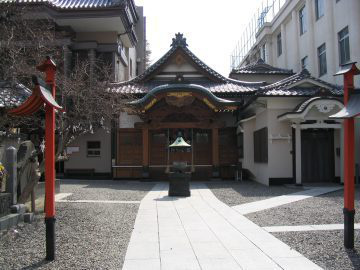
01. Iriya Kisimojin
Shingen-ji Temple, 1 chome 12-16, Shitaya
Kishimojin, a goddess of children, is one of the goddesses in Indian Buddhism. She was atrocious and was an evil goddess snatching children and eating them.
According to a legend, Gautama Buddha hid the youngest son of this goddess and had her mend her ways by making her experience the sorrow of losing a child. Subsequently, she became a good goddess protecting children and women and came to be worshipped as the guardian of childbirth and child-growing.
In early July, the precincts of the temple are crowded with people coming to see "the Morning-Glory Market." The morning-glory was introduced from China as a kind of medicinal herb in the Heian Period. It was the Meiji Period when this market became the famous event at Iriya, and its origin is said to be the display of potted morning-glories at a near-by temple.
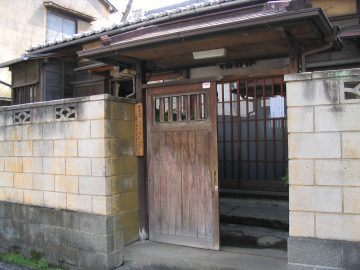
02. Shiki-an
Metropolitan Historic Site
2 chome 5-11, Negishi
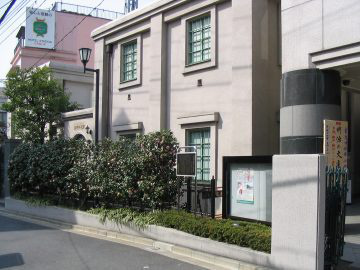
03. Former Residence of Nakamura Fusetsu
Metropolitan Historic Site
2 chome 10-4, Negishi
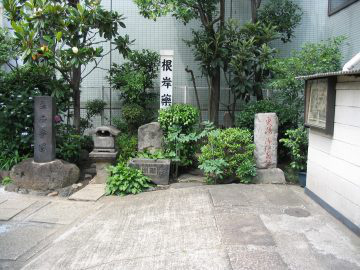
04. The Site of Goinden
Yakushi-ji Temple, 2 chome 19-10, Negishi
The Head Priest of Kan-eiji Temple was succeeded by princes or adopted sons of the Emperor from the 3rd to 15th generation priest. This person is called the "Rinnoujinomiya." (a prince of Rinnouji)
The Goinden was built as the resting place for the Rinnoujinomiya. The period when it was constructed is not clearly known, but it is certain that it was built by the year 1753. The area of the site is over 10,000 square meters, with a garden surrounded by a pine forest. The view of the moon from here is said to be extremely beautiful.
The Goinden was lost in the fires from the Ueno War in May of 1868. Presently, there are absolutely no traces of the old Goinden of that time.
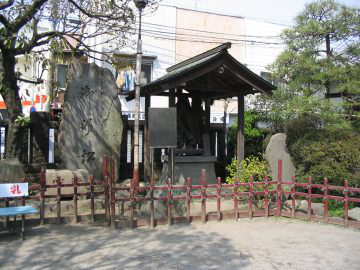
05. Ogyo Pine (Ogyo no Matsu)
Saizo-in Temple, 4 chome 9-5, Negishi
A famous pine tree known from “Edo Meisyo Zue” and from Ukiyo-e by Ando Hiroshige, was loved by the people as the giant pine of Negishi. The present pine tree is its third generation.
The first-generation pine was estimated to be 13.63 meters high, 4.09 meters in circumference, and aged 350 when it was designated a natural monument in 1926. It was said that the tree could be seen from afar. But due to natural disasters and a deteriorating environment, it withered and died in 1928 and was subsequently cut down in 1930.
The second-generation tree was moved here from Ueno Junior high School grounds in 1956 but it also died. The third-generation tree was planted in 1976. After World War II, the roots from the first tree were dug up a preserved. A statue of a Fudo (the central Buddha of Esoteric Buddhism) was carved out of it and it is now worshipped by the people of the Saizo-in Temple and Fudo worshippers.
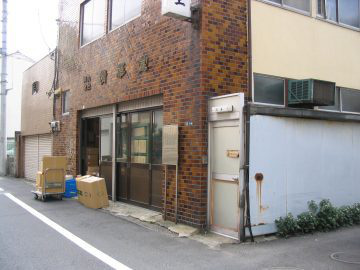
06. Sakai Hoitsu's House Remains
5 chome 11-35, Negishi
In the end of Edo Period, the famous artist Sakai Hoitsu (1761-1828) lived around here. In his later years of life, he moved to this house and named it Uge-an. Hōitsu was a student of the famous artist Ogata Korin and was also good friends with the famous artists Tani Buntyo and Kameda Bosai. Since 1809 Hoitsu lived in Uge-an, on January 15th of each year he invited his artist friends to his home and together they all would start their first art piece of the new year. In 1826 in June he held a remembrance ceremony for his late teacher Ogata Korin.
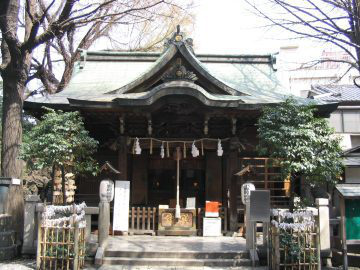
07. Onoterusaki Shrine
2 chome 13-14, Shitaya
The Onoterusaki Shrine is dedicated to Ono-no-Takamura who was a scholar of Chinese classics in the early years of the Heian Period.
This shrine, which is located at Shinobugaoka, near Ueno Park (formerly known as Ueno Terusaki), was often visited by Ono-no-Takamura. He felt at peace here and appreciated the landscape. He visited to come here until his death in 852. Afterwards in 1625, when the Kan-eiji Temple in Ueno was founded, the shrine was relocated to the present site. The current building was established in 1866 at the end of the Edo Period. It survived the Great Kanto Earthquake of 1923 and escaped destruction during the World War Ⅱ .
Also, in this shrine, there, is a miniature of Mt. Fuji, which was designated as an important tangible folk cultural asset. On July 1 of every year. "Climbing" of the miniature Fuji takes place.
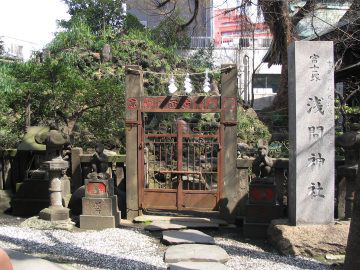
08. Fujizuka of Shitaya-sakamoto
Iimportant cultural properties
Onoterusaki Shrine, 2 chome 13-14, Shitaya
Fujizuka is a miniature mountain that an imitation man made in the image of Mt. Fuji. Many Japanese people believed that Mt. Fuji was god or that god lived in Mt. Fuji, and so many religious groups worshipping Mt. Fuji (they are called Fuji-ko) were formed among people living in Edo (old Tokyo) and many miniature "Mt. Fujis" were built around the town.
Sakamoto Fujizuka was built in 1828. It is about 5 meters tall and about 16 meters in diameter. This precious mound is preserved on good conditions.















